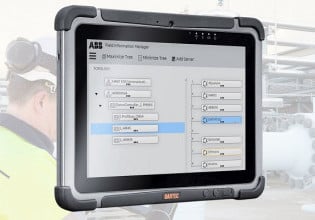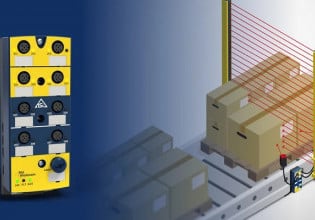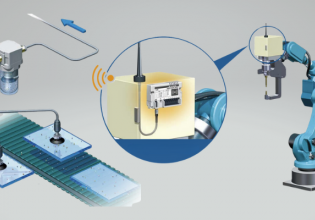Risk Assessment for Industrial Equipment
Learn the basics of risk assessment implementation, including the types of machines that need risk assessment and the process used to analyze them.
Risk assessment (RA) is a safety technique where professionals examine processes or systems for possible risks. These risks may contribute to hazardous conditions which can cause harm to humans, machines, and materials. RA also deals with planning to eliminate hazard risks by suggesting preventive or corrective actions. If it is impossible to eliminate a given risk, RA deals with reducing the hazard to a lower severity level.
Manufacturing industries rely heavily on risk assessment (RA) techniques to make their processes and workplaces safe.
Risk Assessment Team
Before attempting risk assessment, an RA team must first be assembled. The RA team must be able to understand the process being assessed so they're able to identify possible hazards. Typically, this means that the team comprises people who have firsthand experience with the process in question.
The RA activity is usually supervised by the organization’s health and safety department, with a departmental representative serving as an essential member of the RA team, often acting as a team lead. The team is mandated to use all resources with the full support of all departments.
RA processes can vary from industry to industry and depend upon the target process. They also depend on relevant regulatory requirements, which the organization is obliged to follow.
Risk Assessment Process
Let’s look at general procedures for conducting a risk assessment.

National Institute for Occupational Safety and Health (NIOSH) Hierarchy of Controls. Image used courtesy of CDC
- Hazard identification: RA starts with identifying possible risks. This includes thoroughly inspecting all components or processes involved and looking for any risk contributing to the hazard.
- Risk analysis: The identified risks are analyzed for possible hazards and assessed to determine their degree of intensity. Hazards are characterized according to their severity and the danger they pose. This step should be performed with a pragmatic approach, as the success of the whole RA activity depends on it. This is a crucial step that can determine the success or failure of the entire risk assessment process.
- Risk evaluations: The risks analyzed are grouped into different categories against predetermined criteria. These criteria are developed before the risk assessment activity starts, usually taking into account guidelines from relevant regulatory bodies. The RA team can also consult the operating manuals of the machines or equipment involved to develop acceptance criteria.
- Risk control: Risk control procedures involve the use of different techniques to eliminate the risk. The team considers steps to reduce risk to the minimum possible level if total elimination is not possible.
- Documentation: All steps of the risk assessment activity must be adequately documented. This includes RA methodologies, process details, all evaluations made throughout the process, and the conclusions. This documentation is necessary because it must be produced when the regulatory body inspects the organization for safety compliance.
Types of Machines That Require Risk Assessment
Let’s look at some example processes that require a risk assessment.
Moving Parts
Moving parts are an essential component of machines in an industrial environment. Moving parts can be rotational, straight direction, and reciprocating.
The pharmaceutical and beverage industries use filing machines to fill different liquids into containers such as glass and polyethylene terephthalate (PET) bottles. In these machines, the filling station rotates in a circular direction, and the bottles underneath follow the rotating station. After filling, the containers are transferred to the conveyor, which moves the containers out of the machine.
In another design, the filling station remains stationary, and bottles move toward the filling station. When they arrive underneath the filling station, needles move forward and fill the containers. After filling up to the required mark, filling stops, and the conveyor transfers them out of the machine.
Sharp Edge Operations
Cutter mechanisms involved in the cutting operations represent a common hazard risk. Cutters can be accessible to human operators, especially when they require frequent adjustments.
In blister packing machines, cutters are used to cut and separate filled blisters from packaging material, which moves past the cutter. The cutter moves forward, and reverse, in a reciprocating manner. As the cutter contacts the material, the blisters are immediately cut and separated. The cutter speed is very high and can cause personal injury to the human body, if not adequately guarded.
High-temperature Operations
Some process requires high product temperature, such as blister packing machines. In most cases, the heating station lies in the vicinity of the operator. Close contact of the operator with the heating station can lead to burn risks.
Video used courtesy of Accurate Blister
In blister packing machines, prior to the cutter station lies a sealing station. This station seals the packaging material with tablets in them to form a blister. The sealing takes place when the packaging material is pressed between high temperature dies. The dies' temperature depends on the type of packaging material used and can range up to 200 °C.
Dry heat sterilizers (DHS) are used in the food and pharmaceutical industries to sterilize the container prior to filling products, and the sterilization temperature can be around 200 °C. Although their body structure and control automation is developed by keeping a high temperature, in worst cases, the temperature control feature fails. This failure shoots the temperature up to dangerous levels, and significantly causes loss to the DHS, products, area, and humans.
Types of Risk Assessment Methods
Health and safety professionals use different risk assessment techniques to assess the risk and its associated hazard. It depends on the area of application, ongoing process, and the regulatory body regulations. There are many RA methods, but two standard techniques are qualitative risk assessment and quantitative risk assessment.
Qualitative Risk Assessment
In this RA technique, the risks are categorized into levels representing risk severity, such as high, medium, and low. Numerical values can also be used to represent the risk severity.
Since this technique represents risks without any tool or calculations, the RA team must be experts in the process, application, or equipment. Otherwise, the outcome will not reflect the actual hidden risks.

Risk likelihood ratings. Image used courtesy of American Society of Safety Professionals (ASSP) [PDF]
Quantitative Risk Assessment
Quantitative risk assessment uses calculations and tools to determine the risks. Depending upon the method and approaches applied, a risk matrix may make the RA process effective.
The risk matrix can be 3x3 or 5x5. It all depends on the process and the method used by the health and safety professionals.
Risk assessment is a large and important topic for control engineers, especially because risks—presented by anything from mechanical systems to electronic components—combined with the pressure of achieving production targets can sometimes cause machine operators to neglect safety guidelines. What challenges have you faced regarding risk assessment?
Featured image used courtesy of OSHA [PDF]





